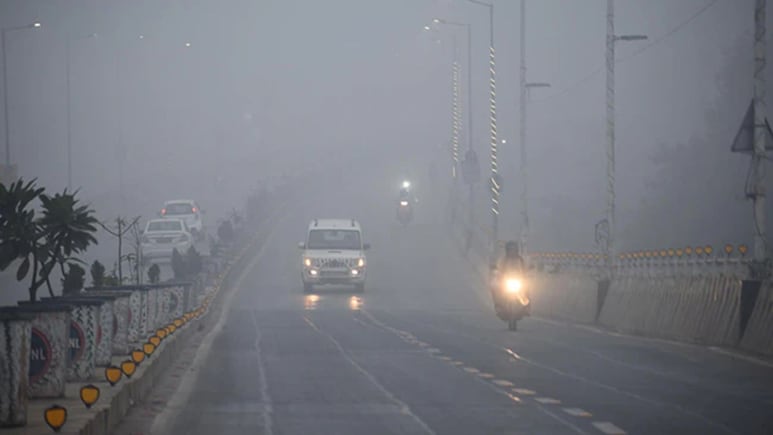
- Delhi's air contains 6.9 nanograms of mercury per cubic metre on average
- Mercury levels in Delhi exceed Northern Hemisphere's average of 1.7 nanograms
- 72 to 92 per cent of mercury emissions in Delhi come from human activities
A new study conducted by Indian researchers has highlighted Delhi's pollution crisis, with toxic metal mercury found in the capital city's air. Researchers reported that Delhi's air contained 6.9 nanograms of mercury per cubic metre on average, which is much higher than the global average of the Northern Hemisphere (1.7 nanograms per cubic metre) and the Southern Hemisphere (1.3 nanograms per cubic metre).
The first-of-its-kind study, conducted by scientists from the Indian Institute of Tropical Meteorology (IITM), Pune, has been published in the journal Air Quality, Atmosphere & Health, by Springer. It analysed data from 2018 to 2024 on gaseous elemental mercury (GEM), a key atmospheric pollutant.
The study attributed 72 per cent to 92 per cent of mercury emissions to human activities, primarily from fossil fuel combustion, industrial activities, and vehicular emissions.
"Natural contributions (8 to 28 per cent) were attributed to re-emission from soil and photochemical processes," the study highlighted.
According to the World Health Organization (WHO), mercury is a toxic metal which is considered among the top 10 chemicals or groups of chemicals of major public health concerns. Though individuals faced a higher chronic exposure to mercury in Delhi, the values remained below WHO thresholds.
"This study highlights the spatial variability, source pathways, and potential health implications of urban mercury pollution in Indian cities and underscores the need for integrated monitoring and policy interventions," the researchers stated.
The study, however, did contain one silver lining: mercury concentrations decreased during the period analysed, in contrast to earlier measurements.
Also Read | Is Cheryl Richardson-Wagner The 'Phillies Karen' From Viral Clip? Fact Check
Microplastics in Delhi air
The study comes in the backdrop of another report underscoring Delhi's escalating pollution crisis, revealing microplastics in three major particulate matter categories: PM10, PM2.5, and PM1. Average concentrations were 1.87 microplastics per cubic metre for PM10, 0.51 microplastics per cubic metre for PM2.5, and 0.49 microplastics per cubic metre for PM1.
The report showed that adults in Delhi inhale almost twice as many microplastic particles in summer as they do in winter. The average daily microplastic exposure rose from 10.7 particles in the colder months to 21.1 in the hotter season -- highlighting a 97 per cent jump.
Though no safe threshold for inhaling microplastics has been established, the study warned that constant exposure to these tiny materials could lead to increased cases of bronchitis, pneumonia, lung inflammation and even cancer.
Track Latest News Live on NDTV.com and get news updates from India and around the world

